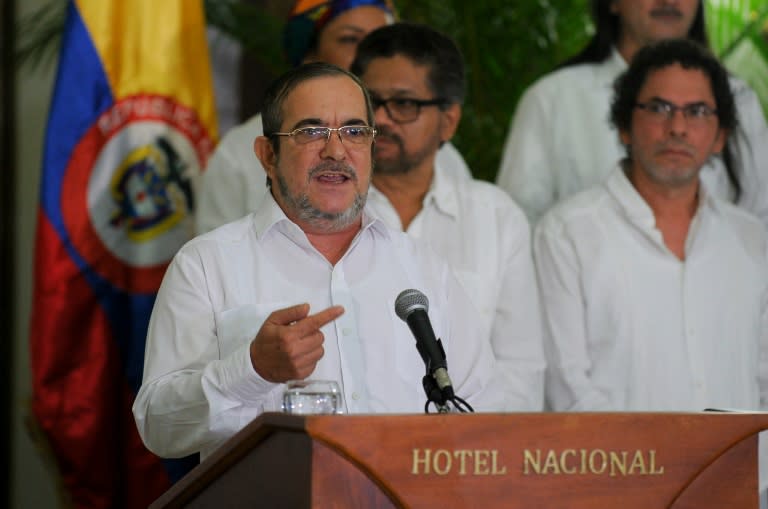Five key points on five decades of conflict in Colombia
Here are five key points on Colombia's five-decade conflict, after the FARC rebels and the government began a historic ceasefire Monday: - Disputed origins - There is disagreement on when and why war broke out. In a country covered in mountains and jungle, where the government's presence is often weak, rural poverty has played a central role. Most historians trace the conflict to the 1960s, when several leftist guerrilla groups rose up against a government they accused of subjugating peasants and the poor. Some go back to the 1940s and a period known as "La Violencia" (the violence), an eruption of bloodshed in the Colombian countryside following the assassination of leftist presidential candidate Jorge Eliecer Gaitan. Others date it to peasant uprisings in the 1920s. - Key actors - Founded in 1964, the Revolutionary Armed Forces of Colombia (FARC) is the country's oldest and largest leftist guerrilla group. But there have been many players in the conflict. Others include: - The National Liberation Army (ELN). Still active. Has agreed to peace talks. - The April 19 Movement (M-19). Demobilized in 1990. - The People's Liberation Army (EPL). Demobilized in 1991. - In the 1980s, a right-wing paramilitary group, the Self-Defense Forces of Colombia (AUC), began fighting the guerrillas. Funded by large landholders, the group sometimes collaborated with the Colombian army. They were disbanded between 2003 and 2006, though remnants continue to operate as criminal gangs. - Drug cartels have also fueled the violence since the 1980s. - Atrocities on all sides - Massacres, kidnappings, scorched-earth campaigns and extrajudicial killings have been hallmarks of the conflict. Atrocities have been committed on all sides. The most notorious crimes include: FARC - Massacres such as the one in the town of Bojaya in 2002, when guerrillas killed at least 79 people sheltering in a church. - Kidnapping and holding hostages, such as then presidential candidate Ingrid Betancourt, abducted in 2002 and rescued in 2008. - Accused of a 2003 car bombing at the El Nogal social club in Bogota, which killed 36 people. ELN - Mass hostage seizures such as the hijacking of Avianca Flight 9463 in 1999. - Massacres such as the one in Machuca in 1998, when rebels dynamited an oil pipeline. Burning oil set the village alight and killed 84 people. M-19 - Besieged the Supreme Court building, the Palace of Justice, in 1985, leaving some 100 people dead. Paramilitaries - Wiped out entire villages, often blasting loud music as militia members killed and raped victims. In one gruesome case, the El Salado massacre in 2000, 60 people were killed. Army - Executed hundreds of civilians and reported them as rebels killed in combat in the so-called "false positives" scandal. - Long list of victims - The conflict has left 260,000 people dead and forced 6.9 million from their homes in the past five decades. Another 45,000 are missing. - Peace efforts - After three failed efforts and four years of new talks, the government and FARC announced a historic peace deal last Wednesday. It will be put to a referendum on October 2. The two sides began a ceasefire Monday.




